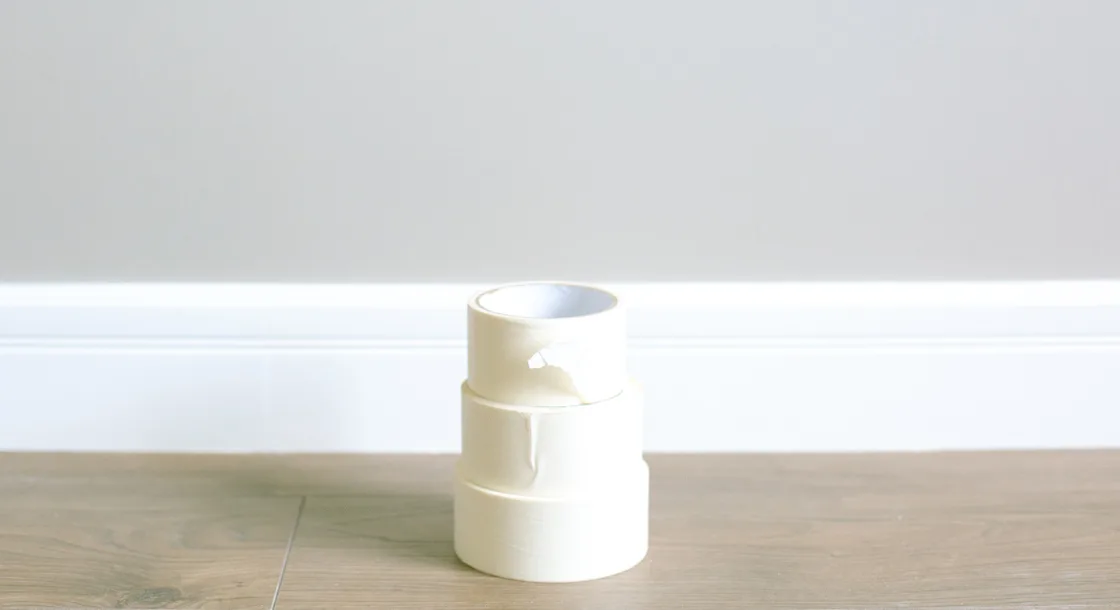Choosing to paint over wallpaper can be a quicker way to revamp a room compared to stripping the paper and then preparing and painting the bare wall. But there are several things you need to consider, and several potential pitfalls to avoid along the way.
When to Paint Over Wallpaper
Before deciding to paint over wallpaper, there are a few things you need to check. The first is that the paper is in good condition and free from any rips or tears. If it is in bad condition, it is usually better to strip it and paint the bare wall instead.
Painting over wallpaper that is peeling in several places, even if not ripped, is not advisable. If wallpaper is peeling in several places, it suggests that the adhesiveness of the paste is starting to fail. This could be due to poor quality paste or that the paste has been compromised by dampness in the room.
If peeling is localised to one area, it might be possible to re-stick it with paste before painting. Do this carefully to avoid air bubbles, and wait for it to dry fully before painting over it.
Plain, flat wallpaper is most suitable for painting over, but you can paint over textured and patterned paper if you don’t mind the texture being visible afterward.
Preparing Wallpaper for Painting
Assuming that you have checked that the wallpaper is in good condition, there shouldn’t be too much preparation needed before you paint over it.
- Move any furniture away from the walls and cover it with dust sheets to protect it from paint spots. Protect the carpet or wood floor in the same way.
- Use a clean, dry cloth to wipe away any dust and loose dirt from the surface of the wallpaper. Ensure you get into the corners where dust can accumulate.
- Dampen another clean cloth in a mixture of water and a small amount of washing-up liquid. Wring out the cloth well and use it gently to clean the surface of the wallpaper.
- Allow the wallpaper to dry completely, and then use masking tape to protect the skirting boards, door and window frames, and any other features.

With the room prepared, you can move on to painting over the wallpaper.
Priming Wallpaper for Painting
Even if your wallpaper is light-coloured or unpatterned, applying at least one coat of primer is recommended. The primer will help you achieve a clean finish when the topcoat is applied, and make the paper easier to cover.
Water-based primer could soak into the wallpaper too much and affect the adhesion of the paste. For this reason, we recommend using an oil-based primer whenever you paint over wallpaper. This Zinsser all-in-one primer and sealer is a great choice for preparing wallpaper for painting.
Apply at least one, but ideally two, coats of primer and allow it to dry completely before continuing with the job.
How to Paint Over Wallpaper
You can now select your topcoat paint colour and begin painting over your wallpapered walls.
- Use a 2-inch (or larger) paintbrush to apply a painted border at the ceiling, skirting, and edge of each wall. Doing this will provide a better finish when you come to using the roller.
- Switch to your roller and paint the remainder of the wall surfaces. Using long, even strokes will provide the best finish.
- Wait for the first coat to dry completely and check the wall in a variety of light conditions to assess the coverage.
- If the walls need a second coat, repeat the steps above to apply it.
- Peel off the masking tape while the final coat of paint is still slightly wet, as this helps avoid pulling paint off the surface.
Problems With painting on Top of Wallpaper
If you plan and prepare correctly, painting over wallpaper should be possible without any problems. However, there are a few issues that can occur. Thankfully, most can be avoided or fixed with a little extra work.
Gaps Between Wallpaper Strips
If the wallpaper was applied correctly, gaps between strips shouldn’t be a problem. However, as wallpaper dries after being pasted, it can sometimes shrink slightly and leave a thin gap. This isn’t a disaster for your plan to paint over the wallpaper, but it does need to be dealt with.
Assuming the wallpaper is otherwise sound and firmly affixed, you can use filler to hide the gap between sheets. It is best to do this after applying the coats of primer. Let the primer set and carefully sand it back to the level of the surrounding paper. Any raised filler will show up badly when painted over, so take the time to sand it down well.







